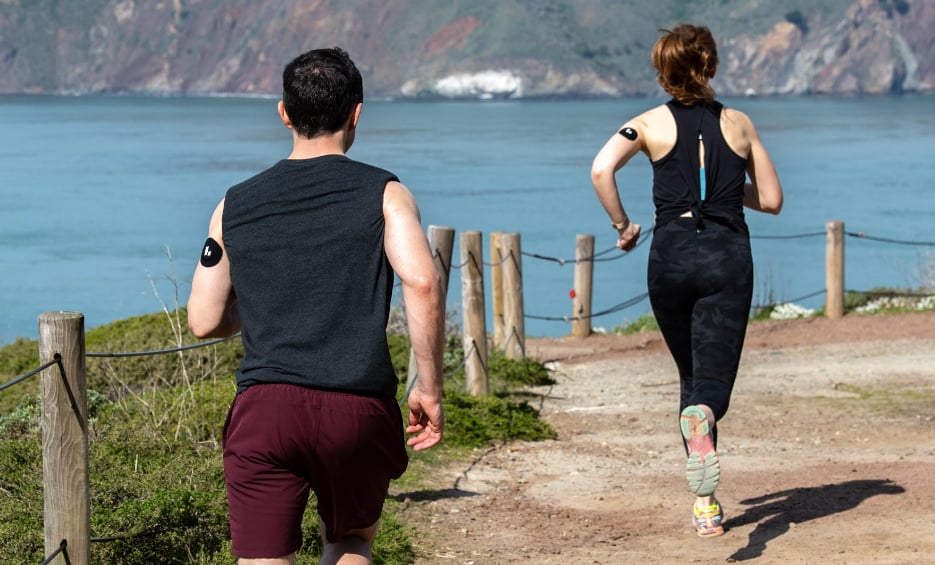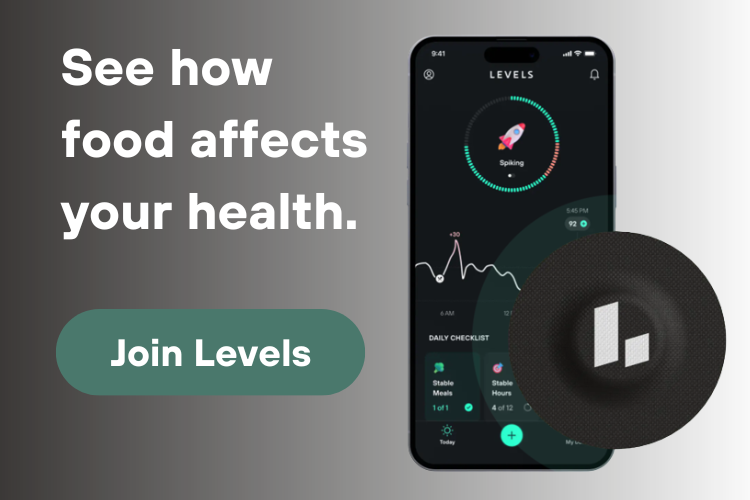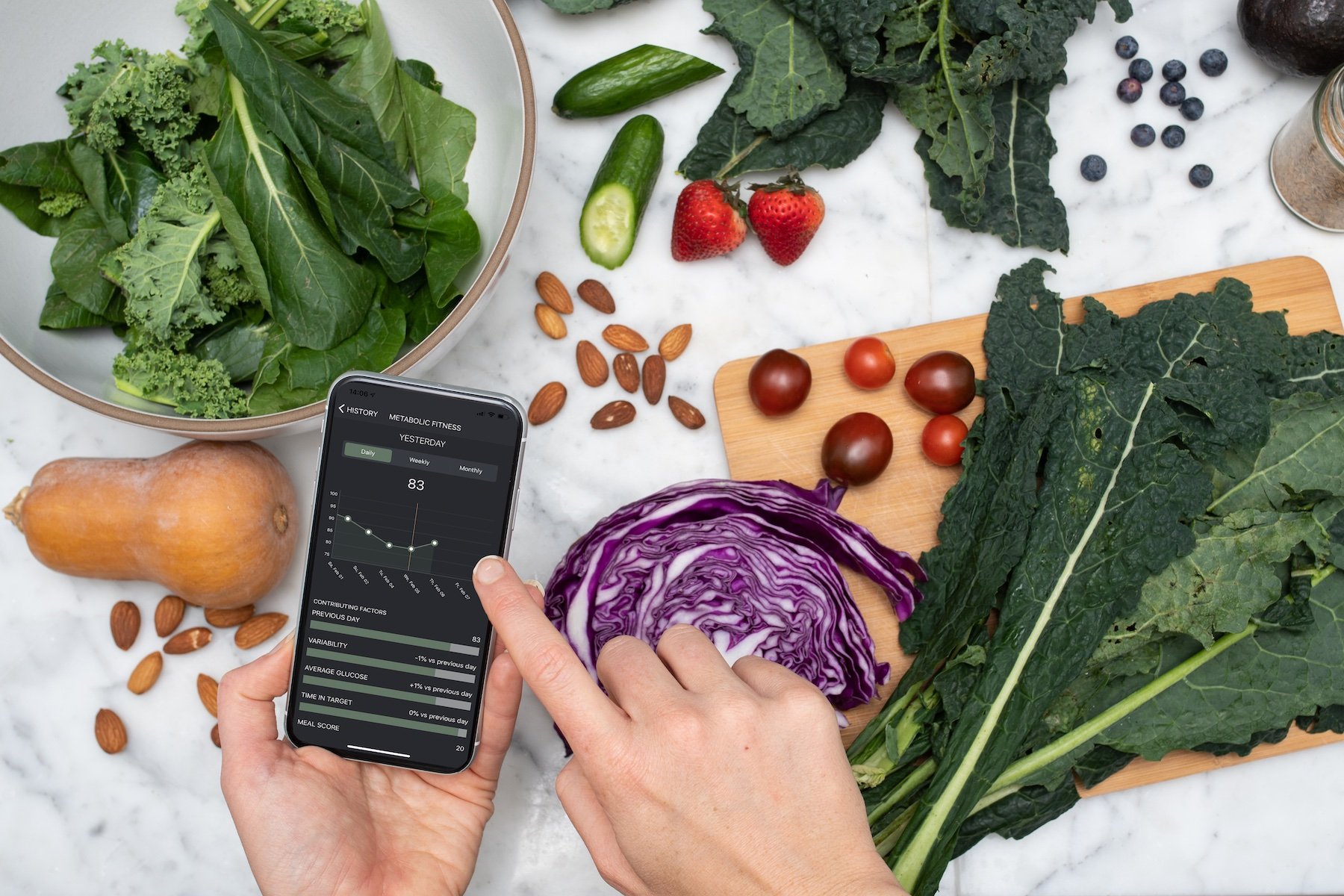Living with Type 1 diabetes has always been an adventure. Every day feels like a journey into the unknown: neither my physicians nor I understand how and why my blood sugar fluctuates. When I got my diagnosis more than 20 years ago, managing that uncertainty meant finger pricks every two hours. Now continuous glucose monitors (CGMs) have changed the way I live my life.
“I’ve seen the power of real-time data in my own life. If everyone understood how food and activity affected their blood sugar, people would make better choices, keep glucose stable, and never develop insulin resistance, much less Type 2 diabetes.”
In those of us with Type 1 diabetes, our bodies don’t make enough insulin (the hormone that allows cells to take up glucose for energy). CGMs enable us to track our daily glucose fluctuations more precisely, which helps us better manage food and insulin injections, the two tools we have to keep our blood sugar from reaching dangerous levels. It’s no overstatement to say that CGM can be a life-saving device for people with diabetes.
But this same technology also has the power to revolutionize the way a person without diabetes approaches their health. As many as 88% of Americans may be living with some form of insulin resistance. That’s close to three hundred million individuals. This epidemic—which can lead to preventable amputations, blindness, cancer, stroke, dementia, and more—is primarily due to the way we eat and live. I’ve seen the power of real-time data in my own life. If everyone understood how food and activity affected their blood sugar, people would make better choices, keep glucose stable, and never develop insulin resistance, much less Type 2 diabetes.

The Levels theory of behavior change
The key to improving health is better behavior. Here we describe how continuous glucose monitoring and closed-loop systems inspire real behavior change.
Read the ArticleAs a wrestler and powerlifter, I know CGM can even help healthy people optimize athletic performance. Endurance is a function of how we use energy. We want to burn both carbohydrates and fat for energy during long workouts, but if our glucose and insulin are chronically elevated, it’s harder for us to burn fat for fuel. The ability to monitor my blood sugar and how it fluctuates in real time allows me to optimize my diet to be the best athlete I can be.
When I was 15, I battled thyroid cancer. I remember feeling like so much was unknown about what was going on in my body, and I just wanted to learn more. Now, at 25 and living with another disease—this one requiring constant decision-making based on data—I know that knowledge is power. People always told me what I can and cannot accomplish because of my condition. I believe broader access to biodata will ensure no one is limited by the body they are born into.
That’s why I find it so frustrating that for as game-changing as CGM is, it’s still not widely available to people with diabetes, much less the broader population.
The limiting factor in the CGM market is accessibility. CGM use in Americans with Type 1 diabetes is growing exponentially, from 6% in 2011 to 12% in 2014 to 24% in 2016 to 38% in 2018. With recent advancements in production, there is a vast availability in CGM technology, but restrictive insurance reimbursements have limited access to diabetics and the general public. Reduced production costs appear to be increasing availability. Now CGMs need to become more accessible.
I cannot count how many hours I’ve spent on hold dealing with insurance companies and third-party vendor pharmacies just to receive my life-saving medical device. Sadly, this is the experience of much of the Type 1 community.
The need is even larger within the Type 2 diabetic community, which makes up 95% of people with diabetes in the US. The real tragedy is that many of these cases are preventable and reversible. More than 88 million adults in the US are prediabetic, and many don’t even know it until diabetes has fully manifested. At that point, the end-organ damage to kidneys and vasculature has set in, and we can only manage symptoms rather than reverse the cause.
If we can expand the use of CGM into the average American while they are still in their 20s, we can learn how to make dietary and lifestyle changes to bring these Type 2 numbers down.
I believe that the solution to the CGM accessibility crisis is to expand the market by increasing demand. As long as supply is not constrained, millions of Americans with and without diabetes seeking out CGM devices will bring unit costs down and mainstream the technology in a way that insurance companies won’t be able to ignore. Also, more people wearing CGM across communities will only produce more evidence of the benefits—cost-saving and life-saving—of having this data early. Normalizing CGM helps everyone. It does not trivialize the life-saving need of the device for those of us with T1D. If 100,000,000 people are using CGM for health optimization, we will see a significant decline in the price for those who need it most, namely the 1.6 million people with T1D.
Finally, even if we solve CGM access, we still need tools to help interpret the data. Let’s face it, anyone who has ever used a CGM understands its limitations. Raw data on blood glucose levels is meaningless without the ability to create actionable change from it.
Learn more:
Unfortunately, our current medical system focuses only on medication management for diabetes. But since we know that smart and nuanced dietary and lifestyle changes are critical for improving glycemic control, we need technology that does a better job of guiding daily choices, not just medication management. Making the glucose data stream more actionable with smart software will benefit people with Type 1 and Type 2 diabetes.
If we expand CGM use beyond the diabetes community, it will spur innovative digital health companies rooted in data science, forward-thinking clinicians, behavioral scientists, machine-learning experts, and engineers to solve this critical piece of the puzzle: letting all patients understand their data in a way that improves their condition and their health.
My desire to better understand my body fueled my decision to become an emergency medicine physician with a focus on metabolic health. As a medical student, I learned about disease pathophysiology and how metabolic changes in our body are the first steps to so many conditions, from cardiovascular disease to cancer. We don’t learn how to prevent these root changes because we don’t have the data to catch them early enough. The number one factor for disease complications is a lack of early detection.
I genuinely believe that the ability to understand our metabolic biodata will help cure diseases today and in the future. Tools like CGM and software that helps us understand our data can benefit all people, empowering daily decisions that improve our health, whether we’re non-diabetic, prediabetic, or have Type 1 or Type 2 diabetes.









